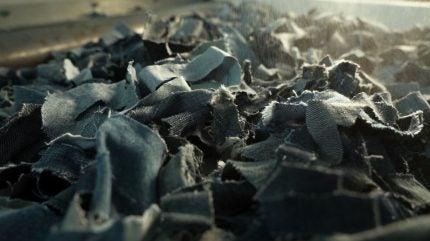
Via the partnership, Soorty and Haelixa are empowering fashion brands with forensic proof of recycled fibre origin — helping them meet rising demands for transparency, due diligence, and accountability.
This traceability is embedded within Soorty’s SecondLife — a recycled cotton initiative designed to deliver measurable impact, from resource efficiency and reduced environmental footprint to supply chain visibility and brand accountability.

Discover B2B Marketing That Performs
Combine business intelligence and editorial excellence to reach engaged professionals across 36 leading media platforms.
Soorty applies Haelixa’s DNA markers — invisible, non-toxic liquid-based tracers — directly to post-consumer textile waste before mechanical shredding. These markers survive spinning, dyeing, and garment manufacturing, enabling verification at every stage of production.
“In today’s complex, global textile supply chains, trust depends on proven origin,” says Dr. Gediminas Mikutis, co-Founder and CTO of Haelixa. “Our partnership with Soorty shows how physical traceability builds confidence in circular claims and meets the rising demand for credible, transparent sourcing.”
Backed by Haelixa’s 100% reliable PCR-based DNA tracking, Soorty can authenticate fibre identity even after it moves through spinning, dyeing, and garment manufacturing, going far beyond conventional paper-based certifications.
“Our long-standing partnership with Haelixa continues to advance Soorty’s commitment to circular fashion,” adds Eda Dikmen at Soorty. “By enabling reliable authentication and traceability throughout the lifecycle of the product — from our mills to the final garment, which could be traced at any time — we’re solidifying our claims while also empowering our brand partners to meet their targets with proof. This shared transparency fosters deeper trust and genuinely equips end customers to make informed decisions.”

US Tariffs are shifting - will you react or anticipate?
Don’t let policy changes catch you off guard. Stay proactive with real-time data and expert analysis.
By GlobalDataThe partnership also gives Soorty’s brand partners the option to use a “Marked & Traced by Haelixa” label on garments, including a scannable QR code that links to a dedicated landing page. This enables brands to tell the product’s sourcing story in detail, while giving end consumers direct access to verified data about fibre origin, processing stages, and supply chain transparency.





